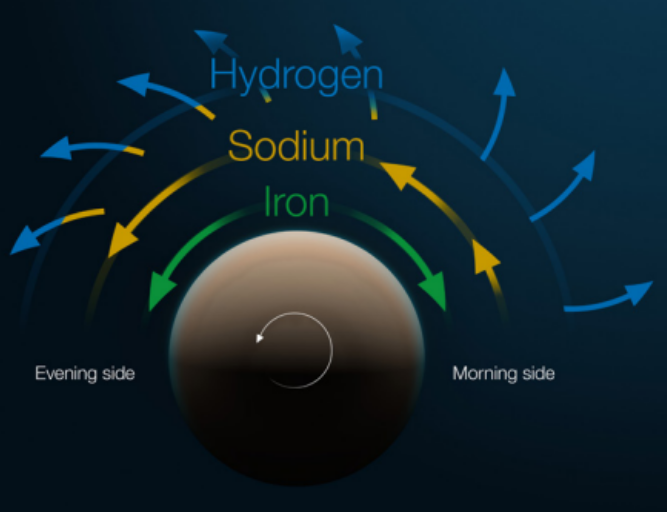WASP-121 b is the definition of an “extreme” exoplanet — it’s so hot that it rains droplets of liquid iron. Now, astronomers have discovered that this planet, located around 900 light-years away from us, is also ravaged by unexpectedly powerful winds.
This represents the first time astronomers have been able to study the atmosphere of a planet outside the solar system in such intricate depth and detail.
The WASP-121 b winds, discovered by a team of astronomers using the Very Large Telescope (VLT) located in the Atacama Desert region of northern Chile, carry elements like iron and titanium around the planet, therefore creating intricate weather patterns.
“This planet’s atmosphere behaves in ways that challenge our understanding of how weather works — not just on Earth, but on all planets,” team leader and Observatoire de la Côte d’Azur researcher Julia Victoria Seidel said in a statement. “It feels like something out of science fiction.”
An extreme world
Many of the extraordinary features of WASP-121 b arise from the fact that it is an ultra-hot Jupiter, a gas giant planet with around 1.2 times the mass of its solar system namesake. WASP-121 b actually orbits so close to its star that a year there lasts just 30 Earth hours.
This proximity also means that WASP-121 b is “tidally locked,” meaning one side of the world permanently faces its star (its scorching hot dayside) while the other (the nightside) is cooler because it faces out to space in perpetuity.
Iron and other metals are vaporized on the scorching hot dayside and are blown across the planet to its nightside, where they condense and fall as liquid metal rains.
Related: Surprise discovery in alien planet’s atmosphere could upend decades of planet formation theory

Delving deep into the atmosphere of WASP-121 b and creating a 3D map of its atmosphere, researchers found different kinds of winds in different layers of the world; they also observed a jet stream spanning half of the planet.
As this jet stream gains speed, it appears to violently churn WASP-121 b’s atmosphere high up in the sky as it crosses the line between the planet’s nightside and dayside, moving toward the hotter half.
“What we found was surprising: a jet stream rotates material around the planet’s equator, while a separate flow at lower levels of the atmosphere moves gas from the hot side to the cooler side,” Seidel said. “This kind of climate has never been seen before on any planet.
“Even the strongest hurricanes in the solar system seem calm in comparison.”

This complex mapping of WASP-121 b’s atmosphere was possible thanks to the VLT instrument ESPRESSO (Echelle Spectrograph for Rocky Exoplanets and Stable Spectroscopic Observations).
The VLT combines light from different telescopes; it analyzes four times as much light as is available to a single instrument, and this allows it to obtain much fainter details of a planet’s atmosphere.
The team trained ESPRESSO on WASP-121 b for one full passage in front of its star’s face, or one full “transit.” This let the researchers detect the signature of multiple chemicals in the atmosphere of the ultra-hot Jupiter across different atmospheric layers.
“The VLT enabled us to probe three different layers of the exoplanet’s atmosphere in one fell swoop,” Leonardo A. dos Santos, team member and a researcher at the Space Telescope Science Institute, said in the statement.
The researchers tracked the movement of iron, sodium and hydrogen, using these elements to track winds in the deep, middle and shallow layers of WASP-121 b’s atmosphere.
“It’s the kind of observation that is very challenging to do with space telescopes, highlighting the importance of ground-based observations of exoplanets,” dos Santos said.
One surprise this investigation delivered was the discovery of titanium lurking just below the jet stream. Previous observations of WASP-121 b have shown this element to be absent. The discrepancy could be because the titanium content was hidden deep in the ultra-hot Jupiter’s atmosphere.
“It’s truly mind-blowing that we’re able to study details like the chemical makeup and weather patterns of a planet at such a vast distance,” Bibiana Prinoth, a researcher at Lund University researcher and author of a companion paper detailing the titanium discovery, said in the statement.
The team’s research was published Feb. 18 in the journal Nature.
Originally posted on Space.com.
